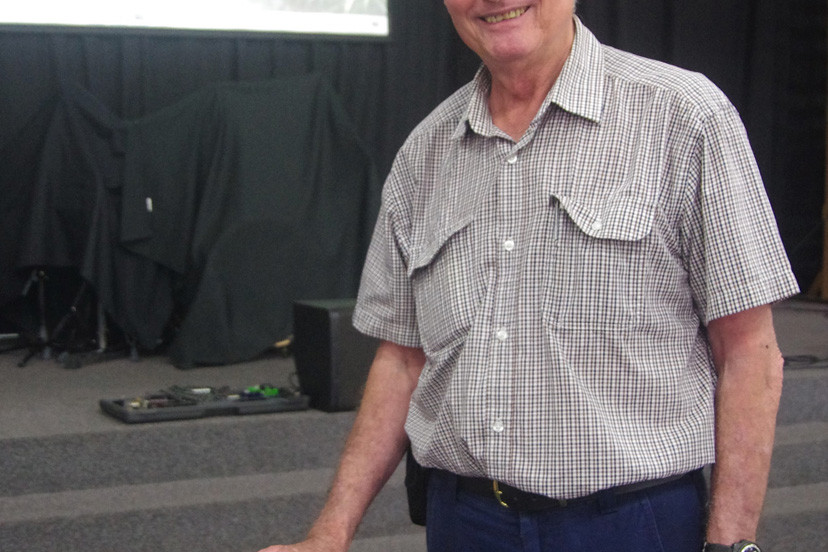On The Land
18 June, 2023
Focus on costly fertiliser reduction
Over 20 participants had the valuable opportunity of being able to attend a presentation and workshop on learning about science backed methods of maintaining crop yield, while at the same time, reducing nitrogen fertiliser.

Over 20 participants had the valuable opportunity of being able to attend a presentation and workshop on learning about science backed methods of maintaining crop yield, while at the same time, reducing nitrogen fertiliser.
The “reducing nitrogen fertiliser using non-legume atmospheric fixation” event was held recently in Mareeba and was conducted by prominent far-northern research scientist John Reghenzani of AgGrow Consulting and was organised by Gulf Savannah NRM, with funding from the Australian Government’s National Landcare Program.
Event organiser and Gulf Savannah NRM intensive agriculture officer Bob Stewart said the day generated strong interest amongst participants.
“John’s study into atmospheric nitrogen fixation by sugarcane was possibly the most important advancement in modern sugarcane farming since green cane harvesting,” he said.
The subject of John’s presentation was research which he carried out between 1998 and 2009 during what he called “the golden era of agricultural research in the sugar industry”.
His work showed that sugarcane, given the right conditions, can fix atmospheric nitrogen, massively reducing reliance on increasingly costly artificial nitrogen fertilisers.
“I first became interested in atmospheric nitrogen fixation 48 years ago when stationed in Mackay, where I observed unexplained patches of wellgrown and very green sugarcane on the edges of paddocks,” he said.
“The literature contained accounts of non-leguminous plants, like sugarcane, capable of tapping into the 75.5 per cent (by weight) nitrogen in the atmosphere.
“While sugarcane only needs around 150kg nitrogen/ha, there is more than 78,000t nitrogen/ha in the atmosphere. The problem is making this gaseous nitrogen available to the plant.”
On display throughout the day was the home-made gas chromatograph that John designed and built in 1975.
He intended to run Acetylene Reduction Assays to provide quantitative measures of atmospheric nitrogen fixation, except he was transferred to Bundaberg and this project was shelved.
It was not until John was stationed in Ingham with the first harvest in 1999 of a series of “21 factorial nitrogen rate by variety field trials” over ten years, did evidence of atmospheric nitrogen fixation by sugarcane re-emerge.
This evidence was complimented by John’s further research which showed additional nitrogen from an unknown source in sugarcane leaves, response of nitrogen-deficient sugarcane seedlings to inoculation, 15N natural abundance testing showing 21 to 73 per cent of the plant’s nitrogen coming from the atmosphere, plus presence of nitrogen-fi xing bacteria in sugarcane stalks and rhizosphere.
In October 2010, John was an invited keynote speaker in Brazil at the 12th International Symposium on Biological Nitrogen Fixation with Non-Legumes.
The Brazilians are research leaders in nitrogen fixation by sugarcane and other non-legumes but have not achieved the success or consistency of John’s results.
John explained that the reasons for this could include the lack of appropriate nitrogenfixing bacterial strains in Brazil and possible unsuitability of their plant cultivars.
Australian interest is growing in atmospheric nitrogen fixation by non-legumes.
During the workshop and using a Mareeba example farm, he also took attendees through the steps in the design and implementation of their own field trial for their property, to be able to test and see if atmospheric nitrogen fixation works for them.
As well as reducing fertiliser application and increasing a grower’s profit margin, in some cases with profit being increased by many hundreds of dollars per hectare, other benefits include less nitrogen lost to the environment, less plant fungal disease, increased organic soil carbon and longer ratoons.
John outlined five essential criteria for field trial success which included: presence of endogenous nitrogen-fixing bacteria, use of responsive varieties, application of only 10 to 30kg nitrogen/ha (depending on soil type), early treatment and a fallback option if the crop becomes deficient in nitrogen.
For further information, contact John Reghenzani at AgGrow Consulting on 0429 681 296 or email aggrowconsulting@bigpond.com


